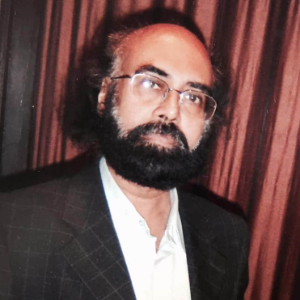Title : Alkali based molecular-ion sims: An innovative chemical approach for the exact composition analysis of quantum structures
Abstract:
If alkali metals such as Li, Rb, K, Na, Cs, …etc. (referred to as A in general) are present in the neighborhood of the probing element (M) on a sample surface, quasi-molecular ions can be formed by the attachment of these alkali ions [(MA)+ formation] in the Secondary Ion Mass Spectrometry (SIMS) process. The formation of these (MA)+ molecular ions has strong correlation with the atomic polarizability of the element M. The emission process for the re-sputtered species M0 is decoupled from the MA+ ion formation process, in analogy with the ion formation in secondary neutral mass spectrometry (SNMS), resulting in a drastic decrease in the conventional ‘matrix effect’ in secondary ion mass spectrometry (SIMS). Although the detection of MA+ molecular ions in SIMS has found its applicability in direct materials quantification, it generally suffers from a low useful yield. In such cases, detection of (MA)n + [n=2, 3……] molecular-ions offers a better sensitivity (even by several orders of magnitude), as the yields of such molecular-ion complexes have often been found to be much higher than that of MA+ ions. The recombination coefficient of MA+ or (MA2)+ molecular-ion species depends on the electro-positivity or electro-negativity of the element M, respectively. Apart from the surface binding energy of the respective uppermost monolayer, the changes in ‘local surface work-function’ have been found to play a significant role in the emission of these molecular ions. Although these MAn+ molecular-ion based SIMS has great relevance in the analysis of materials, a complete understanding on the formation mechanisms of these ion-complexes is still lacking.
A procedure, based on MAn+- SIMS approach, has been employed for the accurate germanium quantification in Molecular Beam Epitaxy (MBE)-grown Si1−xGex alloys. The ‘matrix effect’ has been shown to be completely suppressed for all Ge-concentrations irrespective of impact Cs+ ion energies. The methodology has successfully been applied for direct quantitative composition analysis of various thin films, multilayer structures and quantum structures without the need of calibration standards. Recent SIMS study on various ZnO-based nanostructures has successfully been correlated to their photo-catalysis and photoemission responses. The talk will address the basics of SIMS, complex formation mechanisms of (MAn)+ molecular ions and potential applications of the MAn+-SIMS approach in chemical analysis of low-dimensional materials.
Audience take-away:
- My talk will address on the fundamentals of quantum structures, theoretical understandings of their “density of states” and their structural/compositional characterizations using state-of-the-art ion-beam methods.
- The audience will be acquainted with the basics of low-dimensional structures (nanomaterials) and an innovative methodology for direct quantitative analysis of smart materials.
- The talk will be pedagogical and motivational which will help the audience know the intricacies and wonders of smart materials and their applications in diverse fields of materials science.
- The researchers will be highly benefited to gain knowledge so that they can initiate experimental research in this challenging area. They can expand the scope of their expertise in teaching and guiding the students and researchers.
- The experimental physicists/chemists with their basic background, knowledge and training will be greatly enriched with the comprehensiveness in novelties and complexities of analytical methods to characterize low-dimensional materials.



